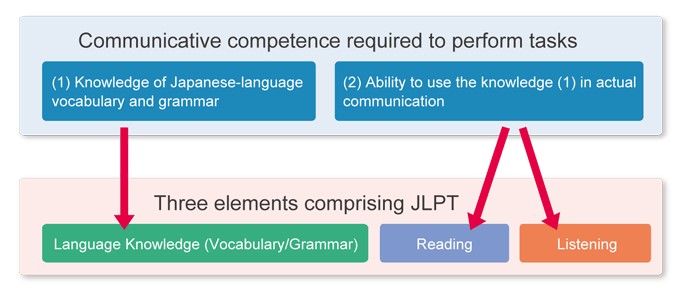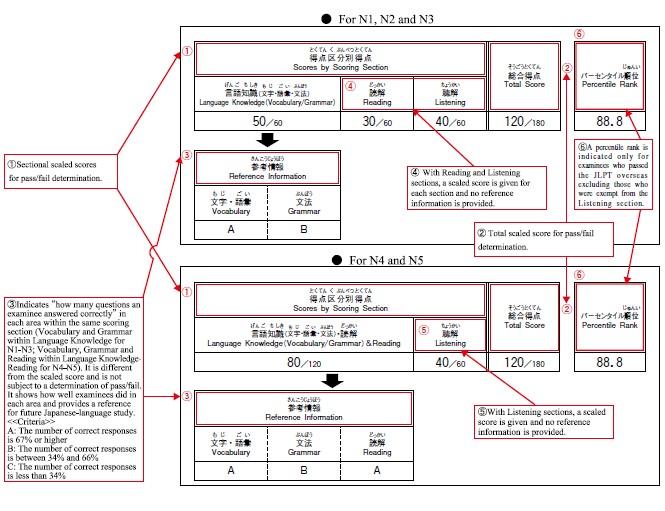 NAL RELATIONS
NAL RELATIONS Indo-Japan Cultural Centre
Indo-Japan Cultural Centre
INDO JAPAN CULTURAL CENTRE was established in BIHER in 2019, to strengthen the Japan-India relations in educational, cultural and economic fields among students. And it’s marching ahead with a grand vision.
In order to make BIHER - IJCC a unique and a Centre of Excellence various activities are conducted in the Centre ,which includes popularizing Japanese art, literature and culture, business practices and management techniques and explore in new areas of cooperation in all aspects of Indo-Japan relations. The Centre itself is actively involved in strengthening linguistic and cultural relations between Japan and India. Special lectures and seminars by Indian and Japanese scholars will be organized from time to time through video conferencing at INDO-JAPAN CULTURAL CENTRE- BIHER or by inviting the Japanese scholars to BIHER-Chennai.
The Centre has organized seminars, workshops and cultural events etc. from time to time to create a new awareness among student community in the university, about the growing importance of Japan in Indian polity, through planned programmes.
Consulate – General of Japan conducted a Japanese Film Festival at VR – Mall on 15th Nov 2019. Japan consulate cultural head – Ms. Megumi Shimada and Mr. Loganathan were the event organizers who was behind this successful event. Almost 50 students actively joined the event, it was a good opportunity for the students to connect with the language and develop their interest in it. They enjoyed watching the movie same time getting to know the culture of native Japanese people. Japan consulate cultural head – Ms. Megumi Shimada and Mr. Loganathan was surprised to see a huge young crowd who showed interest in learning the language. They interacted with students promising to help them with scholarships to study in japan. Students curiously questioned Japanese people who were present in the event and tried to acquire knowledge on their practice and culture.
As scheduled in the academic calendar Department of Multi-Linguistics studies conducted IRO-HI on 19/2/2020( Tuesday). More than 150 students actively participated and won prizes in various events .I thank Dr.Manikandan first year HOD, Dr. Mani civil HOD, Prof. Dayakar civil department, Mr.Praveen kumar MBA HOD for gracing the occasion with their presence and judging winners for Origami, Lantern making and anime quiz. I also thank Dean S&H for his support. The students were highly motivated by the speech shared by the dignitaries.
The JLPT (Japanese Language Proficiency Test) was developed to measure the proficiency level of non-native learners of Japanese. It is used by some companies and schools (especially schools in Japan) to determine an individual's Japanese language ability.
The JLPT has five levels: N1, N2, N3, N4 and N5. The easiest level is N5 and the most difficult level is N1. N4 and N5 measure the level of understanding of basic Japanese mainly learned in class. N3 is intermediate level, clearing this level will help you get a Job both in INDIA and JAPAN and even in other foreign countries.
The Japanese-Language Proficiency Test (JLPT) has been offered by the Japan Foundation and Japan Educational Exchanges and Services (formerly Association of International Education, Japan) since 1984 as a reliable means of evaluating and certifying the Japanese proficiency of non-native speakers. More number of examinees around the globe, making JLPT the largest-scale Japanese-language test in the world.
Over time, test applicants have become more diverse, and use of JLPT results has expanded from skill measurement to include employment screening and evaluation for promotions and pay raises as well as use as a form of qualification. Many outstanding suggestions for improvement were also submitted by a wide variety of individuals around the world.
JLPT certificates offer various advantages, ranging from recognition as academic credit and graduation certification at schools to preferential treatment at companies and acknowledgement of qualification in society.
The JLPT places importance not only on (1) knowledge of Japanese-language vocabulary and grammar but also on the (2) ability to use the knowledge in actual communication. In order to perform various "everyday tasks" that require language, not only language knowledge but also the ability to actually use it are necessary. Therefore, the JLPT measures comprehensive Japanese-language communicative competence through three elements: "Language Knowledge" to measure (1), and "Reading" and "Listening" to measure (2).

Due to the large scale of testing, answers will be machine-scored. Note that the JLPT does not include sections to measure speaking or writing proficiency directly.
The JLPT is offered in five levels (N1, N2, N3, N4, N5). In order to measure Japanese-language proficiency as thoroughly as possible, test items are designed for each level.N4 and N5 measure understanding of basic Japanese that is mainly learned in the classroom. N1 and N2 measure understanding of Japanese used in a broad range of actual everyday scenes. N3 bridges the gap between N4/N5 and N1/N2.
Despite the best attempts to assure consistency, it is inevitable that the level of difficulty of the test will differ slightly from session to session. Using "raw scores" (based on the number of correct answers) could result in different test scores for individuals with the same ability, depending on the difficulty of tests. Instead of raw scores, the JLPT has adopted "scaled scores." Scaled scores are based on the equalization method and allow measurement on the same scale regardless of time the test is taken.Scaled scores enable the JLPT to more accurately and fairly indicate Japanese-language ability at the time of testing.
The JLPT has five levels: N1, N2, N3, N4 and N5. The easiest level is N5 and the most difficult level is N1.

N4 and N5 measure the level of understanding of basic Japanese mainly learned in class. N1and N2 measure the level of understanding of Japanese used in a broad range of scenes in actual everyday life. N3 is a bridging level between N1/N2 and N4/N5.
Linguistic competence required for the JLPT is expressed in terms of language activities, such as Reading and Listening, as shown in the table below. While not noted in the table, Language Knowledge, such as Vocabulary and Grammar, is also required for successful execution of these activities.
| Level | A summary of linguistic competence required for each level |
| N1 | The ability to understand Japanese used in a variety of circumstances.
Reading
|
| N2 | The ability to understand Japanese used in everyday situations, and in a variety of circumstances to a certain degree.
Reading
|
| N3 | The ability to understand Japanese used in everyday situations to a certain degree.
Reading
|
| N4 | The ability to understand basic Japanese.
Reading
|
| N5 | The ability to understand some basic Japanese..
Reading
|
| Level | Test sections 〈Test time〉 | ||
| N1 | Language Knowledge(Vocabulary/Grammar) Reading 〈110min〉 | Listening 〈60min〉 |
|
| N2 | Language Knowledge(Vocabulary/Grammar) Reading 〈105min〉 | Listening 〈50min〉 |
|
| N3 | Language Knowledge(Vocabulary)〈30min〉 | Language Knowledge(Grammar) Reading 〈70min〉 | Listening 〈40min〉 |
| N4 | Language Knowledge(Vocabulary) 〈30min〉 Test time is 〈25min〉 from the test in 2020 (December). |
Language Knowledge(Grammar) Reading 〈60min〉 Test time is 〈55min〉 from the test in 2020 (December) |
Listening 〈35min〉 No change of test time |
| N5 | Language Knowledge(Vocabulary) 〈25min〉 Test time is 〈20min〉 from the test in 2020 (December). |
Language Knowledge(Grammar) Reading 〈50min〉 Test time is 〈40min〉 from the test in 2020 (December). |
Listening 〈30min〉 No change of test time |
Questions in each test section are categorized into type of test items according to competence to be measured. Each test item type contains multiple questions. Purposes of test item types are determined for each level.
| Test section | Type of test items | N1 | N2 | N3 | N4 | N5 | |
| Language Knowledge Reading |
Vocabulary | Kanji reading | ○ | ○ | ○ | ○ | ○ |
| Orthography | ― | ○ | ○ | ○ | ○ | ||
| Word formation | ― | ○ | ― | ― | ― | ||
| Contextually-defined expressions | ○ | ○ | ○ | ○ | ○ | ||
| Paraphrases | ○ | ○ | ○ | ○ | ○ | ||
| Usage | ○ | ○ | ○ | ○ | ― | ||
| Grammar | Sentential grammar 1 (Selecting grammar form) |
○ | ○ | ○ | ○ | ○ | |
| Sentential grammar 2 (Sentence composition) |
○ | ○ | ○ | ○ | ○ | ||
| Text grammar | ○ | ○ | ○ | ○ | ○ | ||
| Reading | Comprehension (Short passages) |
○ | ○ | ○ | ○ | ○ | |
| Comprehension (Mid-size passages) |
○ | ○ | ○ | ○ | ○ | ||
| Comprehension (Long passages) |
○ | ― | ○ | ― | ― | ||
| Integrated comprehension | ○ | ○ | ― | ― | ― | ||
| Thematic comprehension (Long passages) |
○ | ○ | ― | ― | ― | ||
| Information retrieval | ○ | ○ | ○ | ○ | ○ | ||
| Listening | Task-based comprehension | ○ | ○ | ○ | ○ | ○ | |
| Comprehension of key points | ○ | ○ | ○ | ○ | ○ | ||
| Comprehension of general outline | ○ | ○ | ○ | ― | ― | ||
| Verbal expressions | ― | ― | ○ | ○ | ○ | ||
| Quick response | ○ | ○ | ○ | ○ | ○ | ||
| Integrated comprehension | ○ | ○ | ― | ― | ― | ||
Test results are given according to scoring sections in the table below. N1, N2 and N3 have three scoring sections: Language Knowledge (Vocabulary/Grammar)," "Reading" and "Listening." N4 and N5 have two scoring sections: "Language Knowledge (Vocabulary/Grammar) ・Reading" and "Listening."
| Level | Scoring sections | Range of scores |
| N1 | Language Knowledge (Vocabulary/Grammar) | 0~60 |
| Reading | 0~60 | |
| Listening | 0~60 | |
| Total score | 0~180 | |
| N2 | Language Knowledge (Vocabulary/Grammar) | 0~60 |
| Reading | 0~60 | |
| Listening | 0~60 | |
| Total score | 0~180 | |
| N3 | Language Knowledge (Vocabulary/Grammar) | 0~60 |
| Reading | 0~60 | |
| Listening | 0~60 | |
| Total score | 0~180 | |
| N4 | Language Knowledge (Vocabulary/Grammar) Reading | 0~120 |
| Listening | 0~60 | |
| Total score | 0~180 | |
| N5 | Language Knowledge (Vocabulary/Grammar) ・Reading | 0~120 |
| Listening | 0~60 | |
| Total score | 0~180 |
Test sections in the test and scoring sections in the test results correspond as given in the table below.
| In test | In test results | |||
| Level | Test sections | Scoring sections | Range of scores | |
| N1 N2 |
Language Knowledge(Vocabulary/Grammar) Reading |  |
Language Knowledge (Vocabulary/Grammar) |
0~60 |
| Reading | 0~60 | |||
| Listening | Listening | 0~60 | ||
| N3 | Language Knowledge (Vocabulary) |
 |
Language Knowledge (Vocabulary/Grammar) |
0~60 |
| Language Knowledge(Grammar)・Reading | Reading | 0~60 | ||
| Listening | Listening | 0~60 | ||
| N4 N5 |
Language Knowledge(Vocabulary) |  |
Language Knowledge (Vocabulary/Grammar)・Reading |
0~120 |
| Language Knowledge(Grammar)・Reading | ||||
| Listening | Listening | 0~60 | ||
In order to pass, (1) total score needs to be at or above the point required for passing (overall pass mark) and (2) score in each scoring section needs to be at or above the minimum point required for passing (sectional pass mark). If there is even one scoring section where the score is below the sectional pass mark, examinees are determined to have failed, no matter how high the total score he/she might have.
Scoring sections of N1-N3 and N4-N5 are different. Overall pass marks and sectional pass marks for each level are shown in the table below.
| Level | Total score | Scores by Scoring Sections | ||||||
| Language Knowledge (Vocabulary/Grammar) |
Reading | Listening | ||||||
| Range of scores | Overall pass marks | Range of scores | Sectional pass marks | Range of scores | Sectional pass marks | Range of scores | Sectional pass marks | |
| N1 | 0~180 points |
100 points | 0~60 points | 19 points | 0~60 points | 19 points | 0~60 points | 19 points |
| N2 | 0~180 points |
90 points | 0~60 points | 19 points | 0~60 points | 19 points | 0~60 points | 19 points |
| N3 | 0~180 points |
95 points | 0~60 points | 19 points | 0~60 points | 19 points | 0~60 points | 19 points |
| Level | Total score | Scores by Scoring Sections | ||||
| Language Knowledge (Vocabulary/Grammar) Reading |
Listening | |||||
| Range of scores | Overall pass marks | Range of scores | Sectional pass marks | Range of scores | Sectional pass marks | |
| N4 | 0~180 points |
90 points | 0~120 points | 38 points | 0~60 points | 19 points |
| N5 | 0~180 points |
80 points | 0~120 points | 38 points | 0~60 points | 19 points |
※The above standards were adopted beginning with July test in 2010 (December test in 2010 with N4 and N5).
Examinees will be judged to have failed if they miss a test section. Although they will receive a Score Report, it will not show scores for any test section, including those that have been taken.
All examinees in each level will receive a Score Report.
Successful examinees will receive a Certificate of Proficiency.

※If an examinee misses a required test section, scoring is not conducted and he/she is judged to have failed. The examinee will receive a Score Report※1 yet it does not show scores for any test section, including those that have been taken. Scores are shown as asterisks (for example **/60) in the score columns.
Batch 1
| S NO | SEM | REGNO | NAME | DEPT | SECTION |
| 1 | 4TH | U19CS466 | KARTHIGA | CSE | SEC C |
| 2 | 4TH | U19AS008 | DHIRAJ | AEROSPACE | SEC A |
| 3 | 4TH | U19AS023 | IRFAN | AEROSPACE | SEC A |
| 4 | 4TH | U19AC003 | AKSHAYA | BIO | SEC A |
| 5 | 4TH | U19AC052 | RAAGAVI | BIO | SEC A |
| 6 | 4TH | U19AE008 | POOJA SRI | AERONAUTICAL | SEC A |
| 7 | 4TH | U19AE007 | RADHIKA | AERONAUTICAL | SEC A |
| 8 | 4TH | U19AC006 | SOWMIYA | BIO | SEC A |
| 9 | 4TH | U19CB026 | LEKHANA | CSE | SEC E |
| 10 | 4TH | U19EC274 | BHAVANA | ECE | SEC D |
| 11 | 4TH | U19AE027 | RANJITH | AERONAUTICAL | SEC A |
| 12 | 4TH | U19CS432 | SARANYA | CSE | SEC B |
| 13 | 4TH | U19BR031 | NIMISANTHU | BIO | SEC A |
| 14 | 4TH | U19AS010 | ELEENA | AEROSPACE | SEC A |
| 15 | 4TH | U19AS029 | SANANDHU | AEROSPACE | SEC A |
| 16 | 4TH | U19CN198 | NITHEESH REDDY | CSE | SEC D |
| 17 | 4TH | U19CN113 | GANESH | CSE | SEC C |
| 18 | 4TH | U19AS017 | KAREENA | AERO | SEC A |
| 19 | 4TH | U19CS051 | AMRITHA | CSE | SEC A |
| 20 | 4TH | U19CS071 | SAI PRASANNA | CSE | SEC A |
| 21 | 4TH | U19MT032 | RANJITH | MECHATRONICS | SEC A |
Batch 2
| S NO | SEM | REGNO | NAME | DEPT | SECTION |
| 1 | 4TH | U19EC041 | GAYATHRI | ECE | SEC A |
| 2 | 4TH | U19EC092 | SAIKIRAN | ECE | SEC B |
| 3 | 4TH | U19CS021 | HASINI | CSE | SEC A |
| 4 | 4TH | U19CS387 | SINDU | CSE | SEC B |
| 5 | 4TH | U19EC282 | PRIYADRAHSINI | ECE | SEC D |
| 6 | 4TH | U19EC262 | GEETHASREE | ECE | SEC D |
| 7 | 4TH | U19AE004 | ALETI YAMINI | AERONAUTICAL | SEC A |
| 8 | 4TH | U19AE049 | TEJASHWINI | AERONAUTICAL | SEC A |
| 9 | 4TH | U19ME007 | AHKILESH | MECHANICAL | SEC A |
| 10 | 4TH | U19CS027 | AISHWARYA | CSE | SEC A |
| 11 | 4TH | U19CS405 | DHARANI J | CSE | SEC B |
| 12 | 4TH | U19CN118 | DHARANI | CSE | SEC C |
| 13 | 4TH | U19CN114 | HARSHINI | CSE | SEC C |
| 14 | 4TH | U19EN002 | JOSHNA | ECE | SEC G |
| 15 | 4TH | U19CN107 | KOUSALYA | CSE | SEC C |
| 16 | 4TH | U19CN070 | LIKITHA PRIYA | CSE | SEC C |
| 17 | 4TH | U19CN171 | POOJA | CSE | SEC C |
| 18 | 4TH | U19CN124 | SAILAJA | CSE | SEC C |
| 19 | 4TH | U19CN451 | SRI LAKSHMI | CSE | SEC E |
| 20 | 4TH | U19CS393 | SRIHITA REDDY | CSE | SEC B |
| 21 | 4TH | U19CN335 | SRUJANA REDDY | CSE | SEC D |
| 22 | 4TH | U19EC284 | SWAPNA | ECE | SEC D |
| 23 | 4TH | U19CS088 | VENKATESH PRASAD | CSE | SEC A |
| 24 | 6TH | U18BM009 | NIHAL | BIOMEDICAL | SEC A |
| 25 | 6TH | U18BR038 | HARSHAVARDHINI | GENETICS | SEC A |